Introduction
If you’re currently planning a campervan adventure in Iceland, firstly, congrats on the great decision. And, secondly before you toss your wool socks into a bag and crank up the road trip playlist, there are a few things you should know. Because travelling in Iceland by campervan isn’t just about freedom and fjords, it’s also about rolling with the weather, campsite hacks, and packing smarter than a seasoned Tetris champion (for Gen Z, this was the ‘Fortnite’ for my generation).
This guide spills all the beans, from practical tips to personal insights, to help you have the best campervan escape in Iceland possible, and hopefully you’ll be writing your own guide from experience once you’re done.
Why Iceland Is the Ultimate Campervan Destination
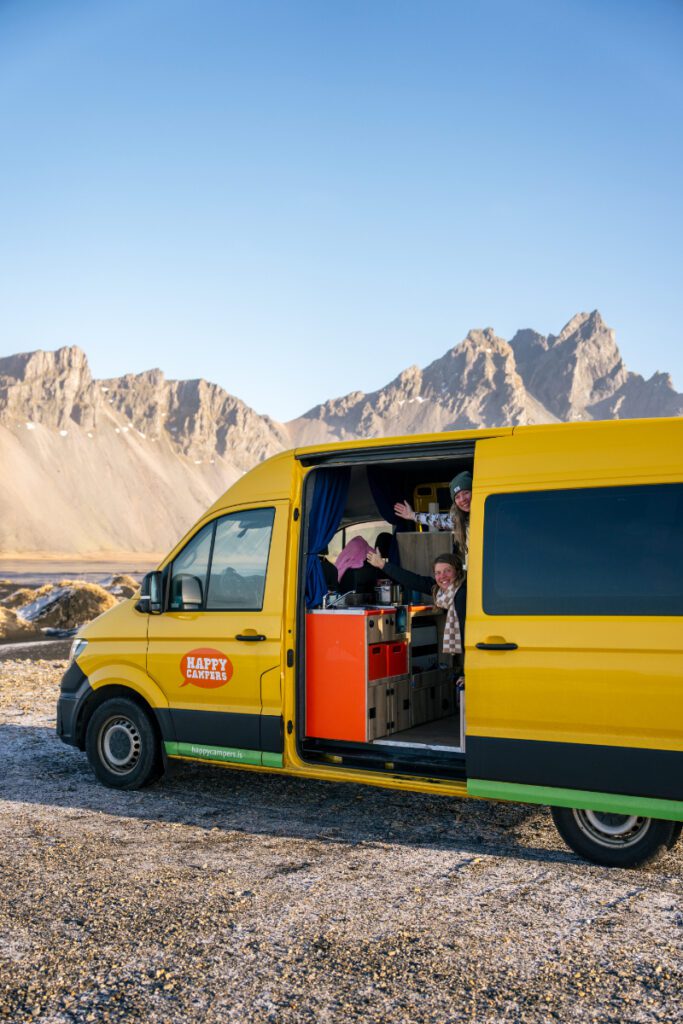
It’s a unique (and expensive) expanse of volcanic plains, waterfalls around every bend, sheep traffic jams, and midnight sun insomnia exploration. Iceland isn’t just scenic — it’s made for campervanning.
Unlike many other countries, Iceland is both safe and compact, with well-maintained roads and an ever-growing network of campsites. That means you can sleep at the base of glaciers one night and next to a black sand beach the next, all without needing to book a hotel months in advance (plus there are relatively few Iceland hotels I’d recommend…but that’s a tale for another day).
Plus, the sense of freedom is unreal. If the view’s not quite doing it for you? Drive 20 minutes and it probably will be.
Our Expertise in Campervan Travel in Iceland
At Happy Campers, we’re not just handing you the keys and wishing you luck. We live, breathe, and camp Iceland – you might notice when picking up your campervan that we even have our own campsite in Keflavík…all to make this point!
Over the years, we’ve helped thousands of travellers experience the magic of vanlife here, and along the way, we’ve learnt what works, what flops, and what’s worth shouting about. Our entire fleet is built with Icelandic conditions in mind, and our team is always on hand to offer real local tips, route suggestions, and support when you’re out on the road.
This guide draws directly from that knowledge as well as my wider ramblings to give you some lesser-known tips. It’s the stuff we wish every traveller knew before hitting the road. So, on behalf of myself, you’re welcome.
1. Planning Your Iceland Campervan Adventure
Getting your Iceland campervan adventure right starts long before you hit the road. From choosing the best time of year to travel to picking the right van for your group, proper planning helps you avoid the classic rookie mistakes. This section breaks down the essentials to help you kick off your trip with confidence and clarity.
When to Go: Best Seasons for Campervan Travel in Iceland
Each season offers something totally unique. Summer (June to August) is peak vanlife with almost 24-hour daylight throughout, open highland roads, and plenty of campsite camaraderie.
Autumn (September to early October) adds golden light and fewer tourists whilst also ushering the start to the new Northern lights season.
Winter (October to April) offers Northern Lights and frosty solitude but demands extra prep. The peppered snowy landscape changes driving conditions and scenic spots drammatically.
Spring is quieter but still and a good mix of winter beauty and summer accessibility.
When you’re defining best, it’s really up to you. Love open roads and less restrictions, come in summer, fancy the lure of Aurora and the snow, come in winter, looking to avoid the crowds and svae a little, come in Autumn or Spring.
Choosing the Right Campervan for Your Needs

Are you a solo explorer? A couple chasing waterfalls and morning coffee clinks? Or even a jam-packed family doing the full Ring Road? Your needs shape your van. We’ve got compact options for couples on a budget and roomy 4×4 beasts for Highland explorers.
Take a look at our full campervan range to see what suits your travel style.
Manual vs Automatic: What to Rent in Iceland
Most European cars are manual, but many of our Happy Campers come in automatic. If you’re not confident driving stick (as my American friends say), then play it safe and go for an automatic (it’s only my inlaws that seem to roll their eyes at such an option). Iceland’s roads demand your full attention, so choose the gearbox that lets you drop any unnecessary stress levels and gear-grinding up a mountain pass.
Read more about driving rules in Iceland.
Where You Can (and Can’t) Camp Legally in Iceland
Since 2015, wild camping in a campervan is illegal in Iceland unless you have written landowner permission. Stick to registered campsites, they’re more comfortable, safer, and keep Iceland beautiful.
Use our campsite map and camping in Iceland guide to find the best overnight stops.
2. What to Pack for an Iceland Campervan Trip
Packing for a campervan adventure in Iceland isn’t just about clothes, it’s about choosing the right gear that makes life on the road smoother, warmer, and a whole lot more enjoyable. Since space is tight and the weather can be wild, every item you bring should earn its keep.
In this section, we’ll walk you through the smart ways to pack, what to wear for all seasons (sometimes in one day), and the little extras that can make a big difference when living out of a van.
Space-Saving Luggage Tips: Duffel Bags vs. Suitcases
Hard-shell suitcases are a nightmare in a campervan. Duffel bags and soft backpacks are much easier to squeeze into storage spots or shuffle around when you’re hunting for socks.
Trust me, the fewer rigid edges, the better. Apologies again Gen Z, this is where the Tetris pros come in handy.
Campervan Storage Hacks for Easy Access
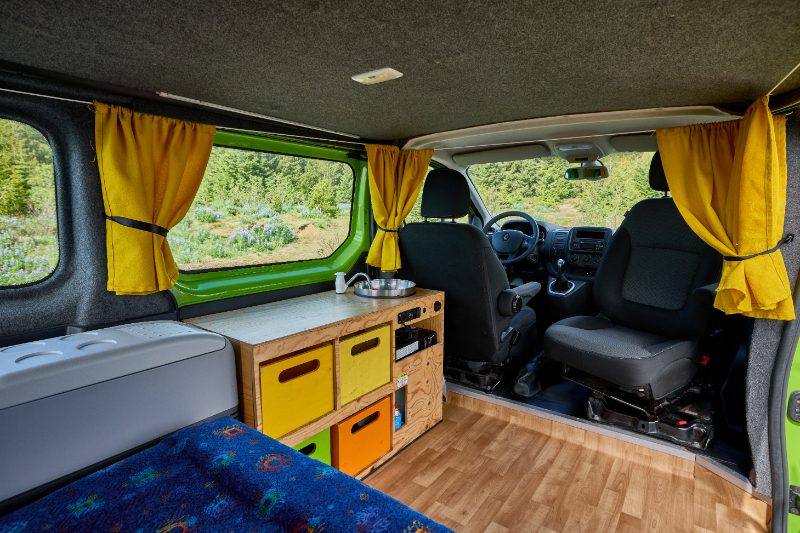
Use packing cubes to separate outfits. Stash small items like chargers and toiletries in hanging organisers. Use reusable bags for food and daily items. Keep essentials in easy-grab spots, after all no one wants to dig for toothpaste at midnight.
We’ve written a full packing guide for campervans to help you avoid overpacking while staying warm and dry no matter the season.
Essential Clothing: Layering for Four Seasons in a Day
Start with a base layer (merino wool is gold), throw on a fleece or jumper, and top it with a windproof waterproof outer layer. Hats, gloves, warm socks, and waterproof boots are essential. If you’re going all out and splurging on a pre-road trip shop than focus on breathable items that dry quickly (and no, not Marty McFly’s count in Back to the Future 2).
Bonus Items You’ll Be Glad You Brought (Eye Masks, Flip-Flops, etc.)
Do you really need an eye mask? Only if you really hate sceneic views, or if you enjoy sleep but are travelling in summer.
Flip-flops? They’re great for shared showers but I wouldn’t consider them essential.
The best gem I’ll suggest is the simple but effective reusable water bottle. Iceland’s tap water is some of the purest in the world (we are 20% glacier-covered with more sheep than people, after all).
What about a headlamp or small lantern? They’re super handy when it’s dark. And don’t forget a decent power bank for batteries that tend to die more quickly in the cold. If you’re planning photographing the Northern Lights, I’d suggest a headlamp with a red light to avoid any silly glare in your pictures.
3. Driving Tips for Icelandic Roads
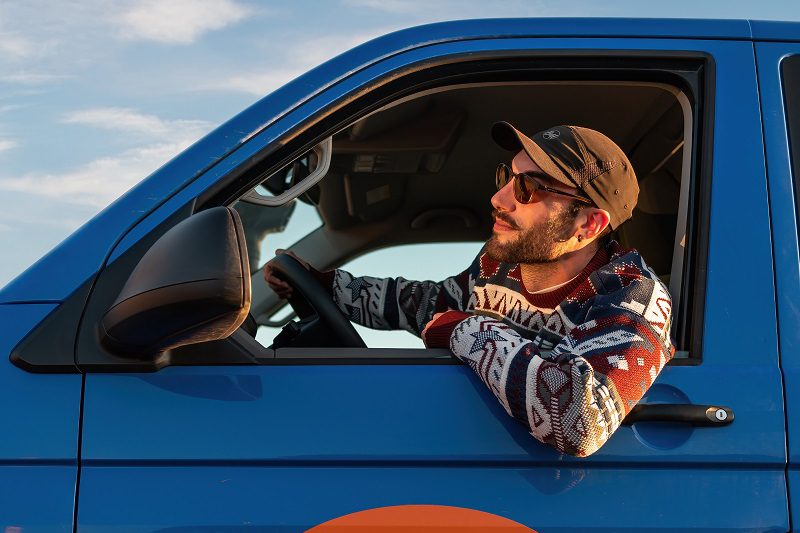
Driving in Iceland is unlike driving anywhere else in the world. One minute you’re cruising along the scenic coast, the next you’re navigating foggy fjords or have decided to take a stop off the ring road to be greeted by a bumpy gravel patch. With unpredictable weather and rugged terrain, knowing how to drive safely here is crucial, especially when your campervan is your home and your ride.
In this section, we’ll guide you through what to expect, how to stay safe, and where to find essential information before each leg of your journey. Consider this your driver’s survival kit, Iceland-style.
Iceland’s Weather & Road Conditions: What You Must Know
Expect the unexpected. Sunny mornings can turn into hailstorms by lunch. Always check forecasts daily on Vedur.is and road conditions on Road.is.
There’s no need to ramp your anxiety up reading this, but it’s always important to be prepared. We are in the middle of the Atlantic and along the south coast there is no land mass directly south until you hit our Pegnuin pen pals in Antarctica. So, yeah, the weather can be a mixed bag.
Daily Checks: Using Vedur.is, Road.is & SafeTravel.is
These three sites are your daily briefing. Vedur.is for weather, Road.is for road closures and conditions, and SafeTravel.is for alerts, warnings, and trip registration (this way if needed the emergency services will know where you were heading in case of a problem, and no not for deportation). Check them each morning, and especially before heading into remote regions.
Gravel Roads, F-Roads & Bridges: What to Expect

Gravel roads are common, especially around natural attractions. Drive slower, avoid braking on bends, and hold the wheel with both hands. F-roads (mountain roads) are for 4x4s only, and often feature river crossings and steep drops.
<iframe width=”560″ height=”315″ src=”https://www.youtube.com/embed/j_SXxzE1YHo?si=Hm80gJ7GIycZAOYp” title=”YouTube video player” frameborder=”0″ allow=”accelerometer; autoplay; clipboard-write; encrypted-media; gyroscope; picture-in-picture; web-share” referrerpolicy=”strict-origin-when-cross-origin” allowfullscreen></iframe>
Don’t attempt them unless your van and nerves are up to the challenge. And go slow, this is not a race, it’s a holiday, enjoy it!
Fuel Stations, Charging Stops & Budgeting for Fuel
Fuel is expensive (no surprise there). Budget around 25000 to 35000 ISK for a full Ring Road loop, depending on your route and van size. Gas stations are well spaced along Route 1, but remote areas may only have one or two options.
Use this fuel station map and plan ahead, especially in the Eastfjords or Westfjords.
4. Sleeping, Eating & Living in Your Campervan
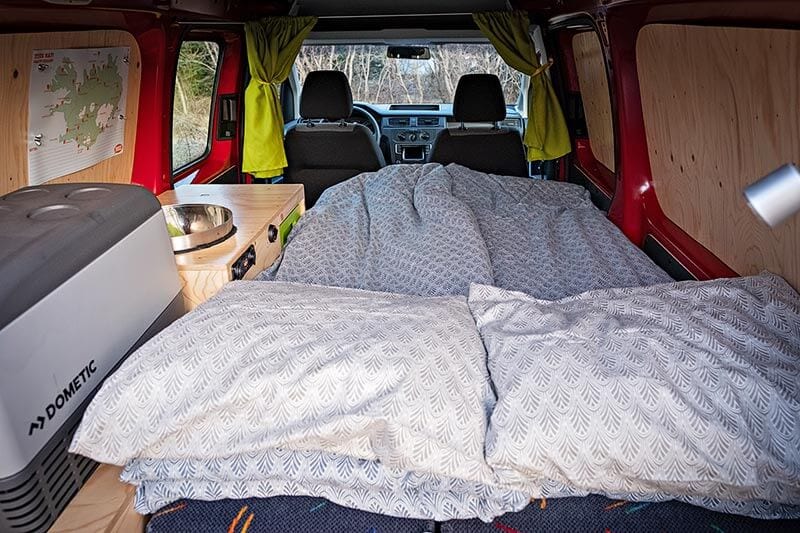
This is the part where vanlife truly comes into its own. Your camper isn’t just your ride, it’s your hotel, kitchen, and living room with mountain views. Living out of a van in Iceland is a beautiful balance of practicality and spontaneity. You might wake up next to a glacier, cook breakfast with the sound of a waterfall in the background, or fall asleep under a sky full of stars.
But making the most of it requires a bit of know-how. From finding the best campsites and hot springs to keeping warm at night and handling bathroom breaks on the go, this section dives into what day-to-day life looks like in your rolling home.
Where to Sleep: Campsites, Hotpots & Hidden Gems
Iceland has over 200 campsites across the country, some with epic views, others with hot tubs, and many with both. Use our campsite map to find scenic stopovers. As an extra tip, try to stay near a natural hot spring for an evening soak after a long drive.
Some personal faves of mine include Skógar (right by a waterfall), Egilsstaðir (great for supplies and you can pop over to Seyðisfjöður easily for some extra beauty), and Siglufjörður (remote fishing town beauty. And yes, those words go together in this context).
Cooking in a Campervan: What’s Included & What to Bring
All Happy Campers campverans come with a gas stove, pots, pans, plates, and utensils, you just buy the ingredients. Stock up on groceries at Bónus or Krónan. Simple meals like pasta, soups, or wraps are campervan staples. In the evenings you can spend more time to your taste and get creative. We’d love to know what your best Iceland dish was after your trip.
If you’re after recipe ideas, we’ve got you covered with our best recommended campervan meals.
Staying Warm & Cozy at Night
All of our vans have built-in heaters that run independently from the engine, meaning you can stay toasty even if it’s freezing outside. Insulated windows and quality bedding keep the cold out and comfort in. Layer up with thermals and keep socks handy for extra chill.
Read our cold weather camping guide for more.
Bathroom Tips: Facilities, Privacy & Hygiene Hacks
Almost all campsites in Iceland have toilets and showers. Most are free, and others are coin/token operated. Bring flip-flops, a microfibre towel, and a toiletry kit that’s easy to grab and go. If nature calls between campsites, please do your best to hold it until you reach a designated toilet. When possible, clench!
5. Must-See Stops on Your Campervan Road Trip

Iceland’s landscapes are bursting with jaw-dropping scenery, and your campervan gives you the freedom to see it all, at your own pace. Whether you’re on a weeklong Ring Road circuit or exploring a single region in depth, there are certain sights that simply can’t be missed.
This section highlights our favourite must-see stops. From famous icons to underrated gems, to help you shape your journey around unforgettable moments and picture-perfect backdrops. I’m a photography nerd, so I telepathically just connected with some of you just this second.
The Golden Circle
The classic intro route of Þingvellir National Park, Geysir geothermal area, and the mighty Gullfoss waterfall, gives you a taste of Iceland’s raw natural beauty and deep cultural history in just a few hours.
Þingvellir lets you walk between two continents and stand where Iceland’s first parliament met over a thousand years ago. At Geysir, you’ll witness the Earth breathe, as Strokkur erupts every few minutes or so. Then Gullfoss thunders down over two giant cascading steps into a canyon with a roar that will be hard to walk away from in a hurry.
All of this is just a short drive from Reykjavík, making it the perfect first-day adventure to break in your campervan, get into the road trip rhythm, and tick off three major highlights without rushing.
South Coast Marvels
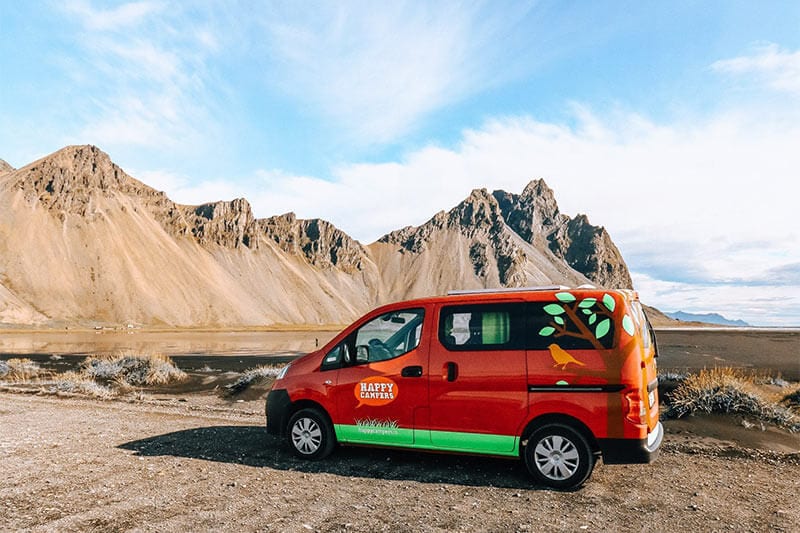
From Seljalandsfoss (you can walk behind it!) to the thunderous drop of Skógafoss, the eerie beauty of Reynisfjara’s black sands, and the icy tongue of Sólheimajökull glacier, the south coast is a photogenic powerhouse that delivers one jaw-dropping scene after another. These sights are not only stunning but also incredibly accessible. In fact, most are just a short walk from the Ring Road, making them ideal for spontaneous pull-overs and leisurely exploration.
This region also offers plenty of adventure opportunities, from glacier hikes and ziplining to puffin spotting and exploring natural ice caves. It’s a stretch of Iceland that’s both wildly diverse and deeply iconic, which I deem a must for every camper’s itinerary.
The Glacier Lagoon & Diamond Beach
Jökulsárlón is incredibly surreal. It’s a glacial lagoon filled with floating icebergs that slowly drift towards the sea. The colours shift from deep blue to pure white, and if you’re lucky, you’ll spot a curious seal bobbing between the icebergs on resting lazily on top with no polar bear threat (we assume).
Just across the road lies the equally famous Diamond Beach, where those same icebergs wash up onto the black sand, glistening like jewels under the Arctic sun. It’s a dramatic contrast of fire-and-ice visuals and one of the most photogenic spots in the country. Bring a camera take some time to play around framing your shots from both sides of the road. If you’re coming in winter, you might even spot a reindeer or forty.
Eastfjords Serenity
Quieter roads, sleepy fishing villages, and epic mountain-meets-ocean views make the Eastfjords one of Iceland’s most peaceful and picturesque regions. The winding coastal routes hug dramatic cliffs, revealing tiny harbours and colourful houses tucked into the landscape. It’s the kind of place where time slows down, and the road is often yours alone.
Wildlife lovers will be especially charmed. This is one of the few places in Iceland where you might spot herds of reindeer grazing in the hills by the raodside. Birdwatchers should bring binoculars too, as the region is rich in seabirds and seasonal migrants.
If you’re craving a break from the crowds and want to experience authentic Icelandic village life, the Eastfjords deliver.
North Iceland & Mývatn
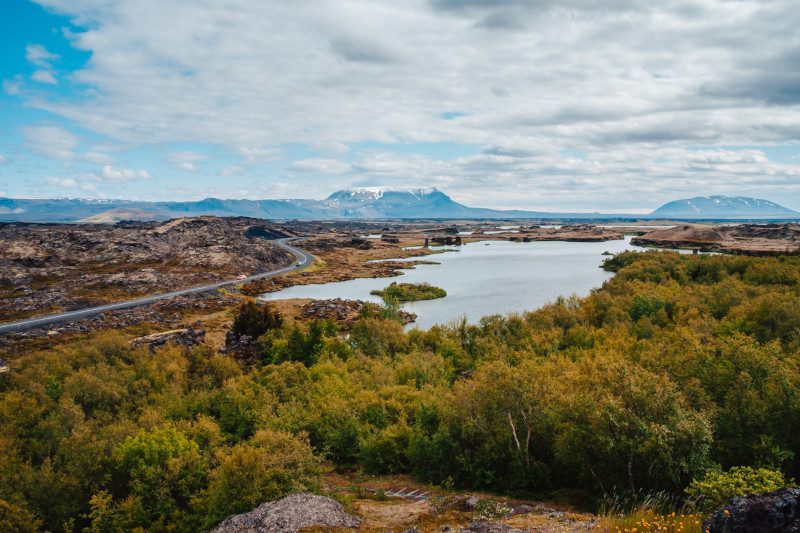
A volcanic wonderland with bubbling mud pots, steaming fumaroles, jagged lava fields, and rejuvenating geothermal baths, the Mývatn region is one of North Iceland’s geological crown jewels. The area feels genuinely like another planet that you mart seriously start discussing simulation theory and whether we are all just reacting to AI prompts….or you’ll just enjoy it and have a blast! (Either, or).
Highlights include the Hverir geothermal area with its surreal Martian-like landscape, the mystical lava formations at Dimmuborgir, and the soothing waters of the Mývatn Nature Baths, which is a much quieter alternative to the Blue Lagoon. Just a short detour from here lies Dettifoss, Europe’s most powerful waterfalls, where thunderous cascades plummet into a misty canyon (its where the opening scene from Prometheus was filmed).
It’s a region that mixes natural power with scenic serenity, offering a totally different vibe from the more travelled south. It’s now even earned the name of the Diamond Circle.
The Snæfellsnes Peninsula
Often called “Iceland in Miniature,” this peninsula has it all: a towering glacier, twisting lava tubes, dramatic sea cliffs, black sand beaches, and of course, Kirkjufell that Insta-famous, arrowhead-shaped mountain from Game of Thrones.
Snæfellsnes condenses the best of Iceland into a single drive, making it perfect for shorter trips or for those who want maximum variety without going too far off the beaten path. It’s also home to the mystical Snæfellsjökull glacier-volcano, which inspired Jules Verne’s ‘Journey to the Centre of the Earth’.
Westfjords Wilderness
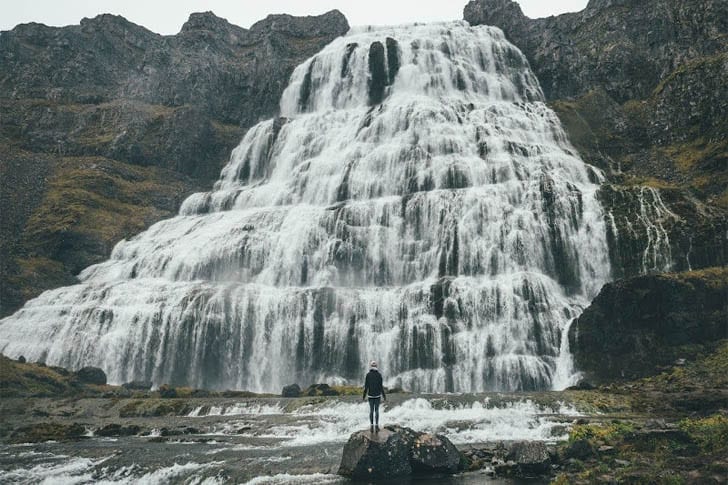
Remote and rugged, the Westfjords reward you with solitude, red sand beaches, and the bird cliffs of Látrabjarg. This is Iceland at its most untouched, where winding mountain roads lead to quiet fjords, and the silence is broken only by the call of seabirds or the hum of your campervan engine next to the craziest waterfalls you’ll find in the country.
Expect gravel roads, limited fuel stations, and fewer services. But you’ll also likely experience fewer tourists, the most spectacular views, and the kind of peaceful remoteness that sticks with you. It’s ideal for travellers who want to trade convenience for true adventure.
6. Activities to Add to Your Campervan Itinerary

With a campervan as your basecamp, adventure is always just around the corner. Here are some epic activities to mix into your road trip:
Glacier Hiking & Ice Caves
Book a tour at Sólheimajökull or Vatnajökull for an unforgettable walk on ancient ice shaped by centuries of volcanic and glacial forces. These hikes offer a rare chance to witness the power and beauty of Iceland’s living glaciers up close, complete with crevasses, crystal-clear ice formations, and expert guides who ensure both safety and storytelling.
In winter, don’t miss the chance to explore the region’s famous ice caves. Formed anew each year, these ethereal blue cathedrals of ice glow with a unique light and are only accessible during the colder months. If you’re after the blue ice caves, then you’ll need to travel to the Vatnajökull region in winter. But, f you’re coming in summer you can eithe rejoin the into the glacier team much closer to Reykjavik, or Katla ice cave which are both open all-year round.
Whale Watching
Húsavík is the undisputed (and self-proclaimed) whale watching capital of Europe, offering some of the most reliable and scenic whale watching experiences in the country. This charming northern town is often the top pick for spotting gentle giants thanks to its deep bay and high success rates. Tours range from small RIB boats for adrenaline seekers to classic wooden boats for a slower, more serene ride (please make sure you only go when the wind is playing ball! Thank me later).
But you don’t have to go north to see whales, tours also depart from Akureyri in North Iceland and Reykjavík in the south-west. Each location offers a chance to witness humpbacks breaching, minke whales cruising, and, if you’re really lucky, even the elusive blue whale making an appearance.
Puffin Watching
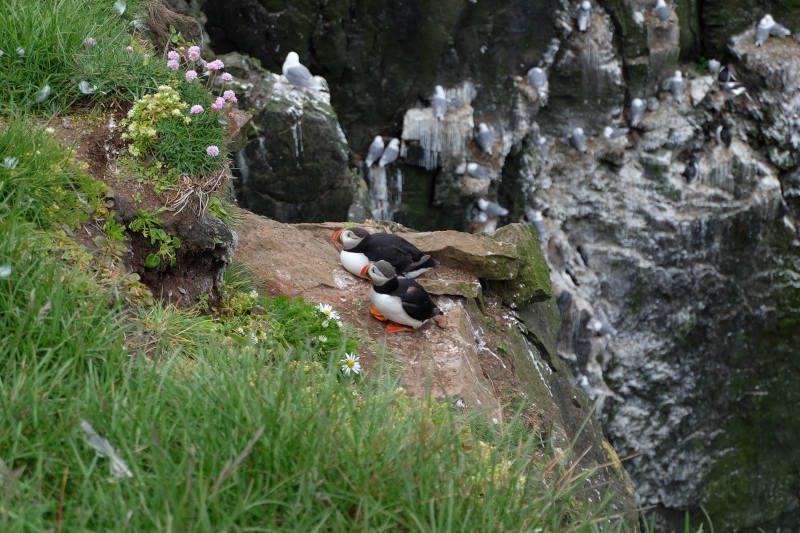
During summer, head to Dyrhólaey, Borgarfjörður Eystri, or Látrabjarg cliffs to see these colourful little birds up close. These coastal cliffs become puffin paradises from May to August, with thousands of nesting pairs returning each year. Bring binoculars and a good zoom lens if you want to capture the bright orange beaks, charming waddles, and aerial acrobatics of these cute little clowns.
Látrabjarg, in particular, is one of Europe’s largest bird cliffs, offering incredible views and the chance to get just a few feet away from puffins (who are surprisingly unbothered by humans despite being on the menu in some places). It’s a must-see experience for wildlife lovers and one of the most delightful encounters you can have during your campervan journey (remember, summer only!)
Hot Spring Hopping
From the iconic Blue Lagoon to hidden gems like Hrunalaug, Reykjadalur, and Hoffell, soaking in natural geothermal pools is peak Iceland. These warm, mineral-rich waters offer the perfect contrast to the country’s dramatic landscapes and chilly air. Whether you’re easing sore hiking muscles or just taking in the view, there’s nothing quite like relaxing in a steaming hot spring surrounded by lava fields, mountains, or even the occasional grazing sheep.
Horseback Riding
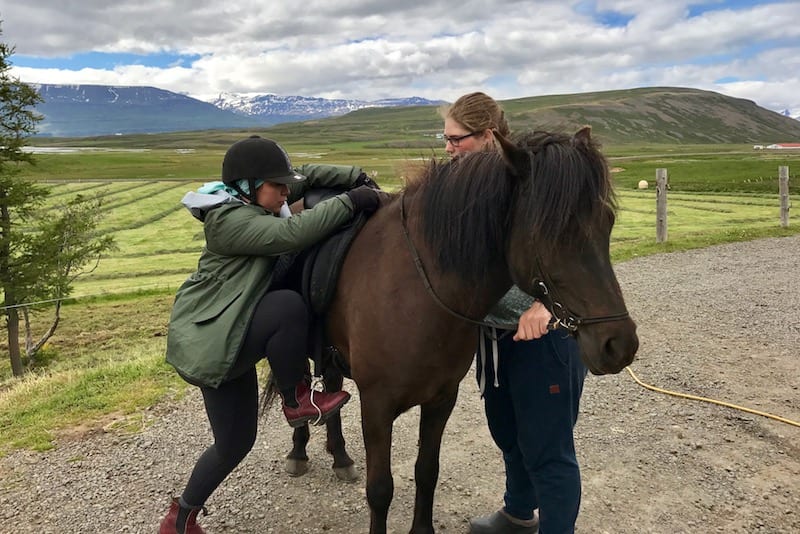
The Icelandic horse is a gentle, hardy, and distinctly charming breed, known for its short stature, thick winter coat, and unique gait called the tölt (also the name of a great cocktail bar in Reykjavík), which offers an incredibly smooth ride, even though it looks quite comical. Brought to the island by Viking settlers over a thousand years ago, this breed has remained genetically pure, making it one of the most unique horse populations in the world.
Riding an Icelandic horse through lava fields or along windswept black sand beaches is like sitting in the seat of the Viking settlers of old (minus the bar and restaurant around the corner, of course). Local tours are available all across the country, and many cater to all skill levels, from first-timers to experienced riders. It’s a peaceful, unforgettable way to experience Iceland’s landscape through a timeless tradition.
Snorkelling or Diving in Silfra
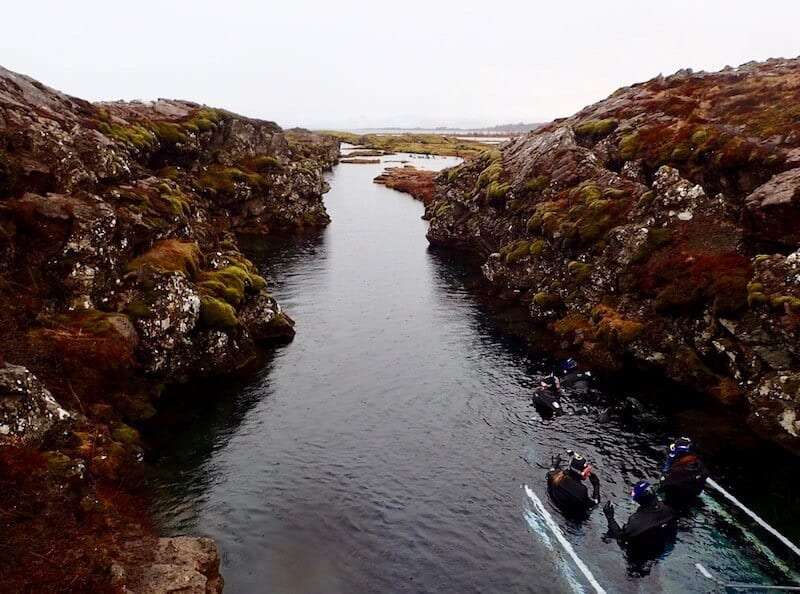
Snorkelling or diving in Silfra, the glacial fissure located in Þingvellir National Park, is a once-in-a-lifetime experience. Here, you can literally float or dive between the North American and Eurasian tectonic plates, which is unlike any other opportunity around the world unless you’re Bear Grills going extra rogue (and no, not drinking more urine).
The water, fed by Langjökull glacier, is not only icy cold but also some of the clearest on Earth, offering visibility of over 100 metres. Whether you snorkel or dive, the electric-blue hues, lava rock formations, and the eerie calm of this submerged rift create a memory that sticks with you long after your wetsuit has dried.
Lava Caving
Explore Iceland’s underworld in lava tubes like Vatnshellir or Raufarhólshellir. Great for a rainy day adventure. Given you’ve been looking up and around all of the mountains, glaciers, and geysers all day, this will help you get closer to the fire in Iceland’s nickname as ‘the land of fir and ice’.
Pack your towel, lace your boots, and make time for the wild stuff, because Iceland’s not meant to be seen through a windshield alone.
7. Insider Tips for First-Time Vanlifers in Iceland

Even the most scenic trip can hit a snag without a little inside info. Whether it’s your first time living out of a van or you’ve done road trips before, Iceland throws in a few unique twists that are worth preparing for.
The following tips are drawn straight from our own travels and the questions we get most often from first-time vanlifers. They’ll help you stay one step ahead, avoid common mistakes, and make your campervan adventure as smooth (and unforgettable) as possible.
Here’s what we tell all first-timers:
Embrace the Unpredictable
Plans will change, and that’s okay. In fact, it’s part of what makes Icelandic vanlife so special. Weather can shift in a heartbeat, roads might close due to unexpected snow, and you might stumble across a secret waterfall that deserves a few extra hours. Embrace the spontaneity, because those unplanned moments often become the best stories of the trip. Go with the flow and let Iceland surprise you.
Always Fill Up Before Journeying Through Remote Areas
Don’t wait until your tank is nearly empty. Iceland’s rugged beauty often means long stretches between towns, and yep, that also almost always includes fuel stations. In areas like the Eastfjords or Westfjords, it’s not uncommon to go 100 km or more without a chance to refuel. Many rural stations also operate on limited hours or are self-service only, so always fill up when you can. A full tank isn’t just convenient, it’s peace of mind on the open road.
The good part? You don’t need any cash – Apple or Google Pay, tap and go. Which come to think of it means…bring a charger as well and make sure you test it works before flying!
Campsites First, Beer Second
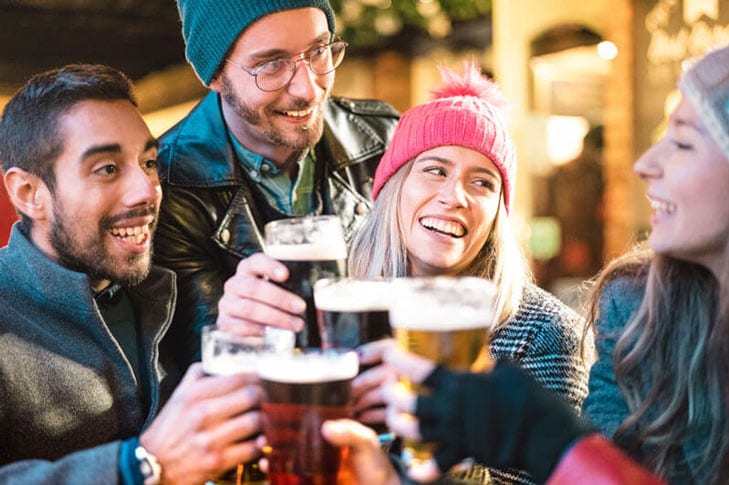
Unlike other countries, alcohol is only sold in Vínbúðins (state liquor stores) in Iceland, and hours can be limited. These stores aren’t open late and are typically closed on Sundays and public holidays. You won’t find beer or wine in regular supermarkets either (they only sell low-alcohol alternatives which also taste absolutely horrible, in my opinion), so if you’re planning a scenic evening tipple or a celebratory drink after a long hike, it’s wise to stock up when you see a Vínbúðin.
Plan ahead, especially if you’re heading into remote regions where the nearest store might be hours away. Just please don’t drink and drive. It’s illegal and a police officer, elf, or troll will catch you.
Bring a Pair of Camp Slippers
Your feet will thank you. After a long day of trekking through waterfalls, lava fields, or rocky coastlines, slipping out of your sturdy hiking boots and into a soft pair of slippers or camp shoes is pure bliss (or maybe I’m getting old). It’s not just about comfort, giving your feet a break can actually help with circulation, recovery, and keeping your campervan clean. Lightweight, foldable slippers or slip-on sandals are easy to pack and make vanlife feel just a bit more like home.
Don’t Rush It
Iceland isn’t a checklist, it’s an experience (nope, this is not a Katy Perry line). The best adventures often come when you ditch the schedule and follow your instincts. Take time to soak in the views, pull over for that unexpected waterfall, or follow a gravel road just to see where it leads. Slow down, linger, take a random side road. Often the most enjoyment lives in the unplanned moments, the quiet, and the surprising.
Talk to Locals (and Fellow Campers)
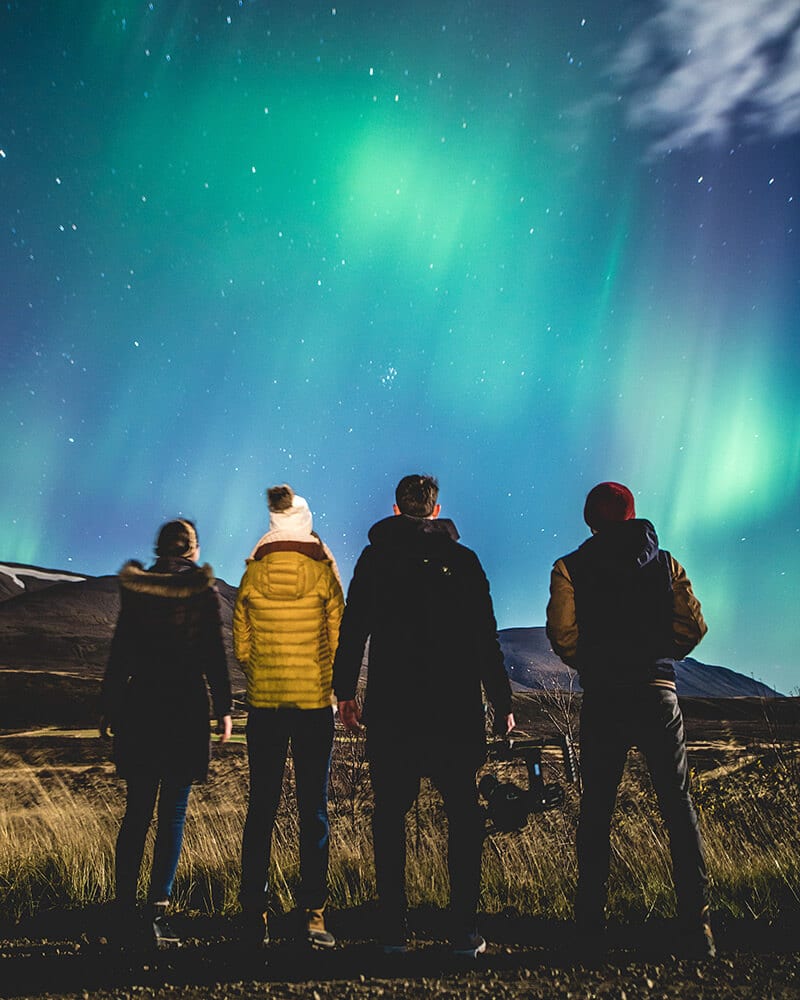
Campsites are social spots. Chat with others for tips on road conditions, recent Northern Lights sightings, or must-see spots. And, it would be awesome if you’re both sharing tips from this guide!
Leave No Trace
Be respectful of nature and local communities. Stick to marked roads, take rubbish with you, and use designated facilities.
The more mindful and flexible you are, the richer your road trip will be.
Conclusion
There’s no better way to explore Iceland than with your home on wheels. Whether you’re ticking off all the waterfalls you can find, stargazing in the highlands, or brewing coffee next to a glacial tongue, the freedom of campervan travel is unbeatable.
We hope these tips help you travel smart, pack well, and feel confident behind the wheel. And remember: the best stories come from the moments you don’t plan.
We’ll see you on the road. Happy camping!
Back